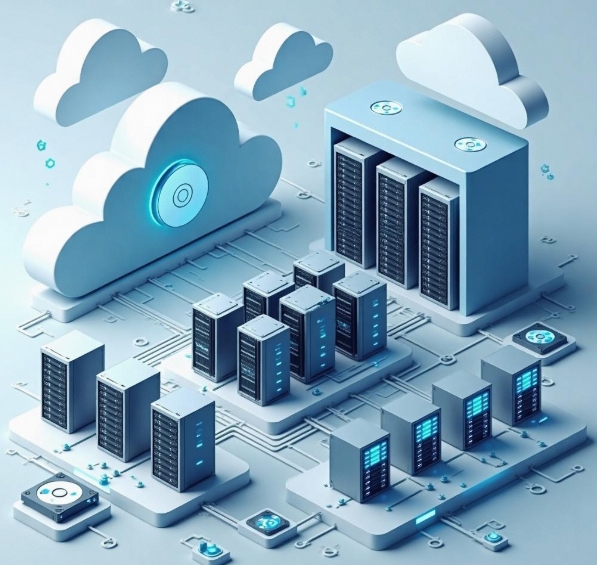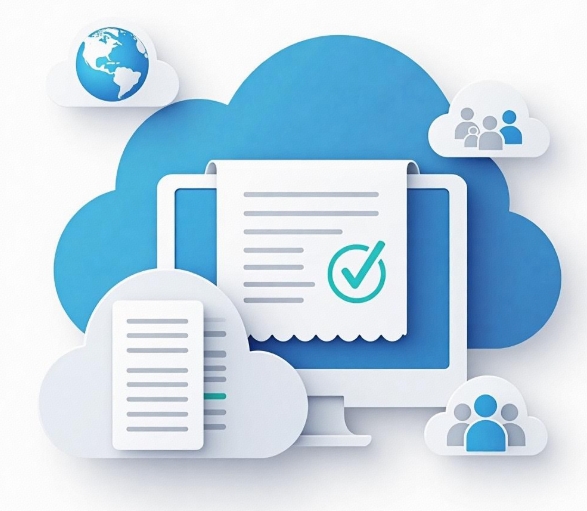How does cloud computing enhance a company's operational efficiency and cost control?
- latest articles
- 1.DApp Development & Customization: Merging Diverse Market Needs with User Experience 2.Analysis of the Core Technical System in DApp Project Development 3.How to achieve cross-chain interoperability in Web3 projects? 4.How does the tokenization of points reconstruct the e-commerce ecosystem? 5.How to Set and Track Data Metrics for a Points Mall? 6.What is DApp Development? Core Concepts and Technical Analysis 7.Inventory of commonly used Web3 development tools and usage tips 8.Development of a Distribution System Integrated with Social E-commerce 9.Six Key Steps for Businesses to Build a Points Mall System 10.What is DApp Development? A Comprehensive Guide from Concept to Implementation
- Popular Articles
- 1.Future Trends and Technology Predictions for APP Development in 2025 2.Analysis of the DeFi Ecosystem: How Developers Can Participate in Decentralized Finance Innovation 3.From Zero to One: How PI Mall Revolutionizes the Traditional E-commerce Model 4.DAPP Development | Best Practices for Professional Customization and Rapid Launch 5.Recommended by the Web3 developer community: the most noteworthy forums and resources 6.From Cloud Computing to Computing Power Leasing: Building a Flexible and Scalable Computing Resource Platform 7.How to Develop a Successful Douyin Mini Program: Technical Architecture and Best Practices 8.Shared Bike System APP: The Convenient Choice in the Era of Smart Travel 9.How to Create a Successful Dating App: From Needs Analysis to User Experience Design 10.From Design to Development: The Complete Process of Bringing an APP Idea to Life
In today's rapidly evolving information technology landscape, cloud computing, as an innovative technological approach, is profoundly impacting the global business environment. As enterprises continuously seek ways to optimize operational efficiency and reduce costs in the face of global competition, the application of cloud computing provides unprecedented opportunities, helping them maintain competitiveness in an ever-changing market.
I. Overview of Cloud Computing
Cloud computing, simply put, involves delivering computing resources (such as servers, storage, databases, applications, etc.) as services to users over a network, primarily the internet. Users do not need to own physical hardware devices but can utilize and pay for computing resources on-demand via the network. This on-demand, elastic service model enables enterprises to rapidly scale and upgrade their IT systems without significant infrastructure investment, greatly enhancing operational efficiency and cost control capabilities.
II. How Cloud Computing Enhances Enterprise Operational Efficiency
1. Flexible Resource Allocation
Traditional enterprise IT systems often require configuration and management on physical servers, especially when the company scales up or experiences business growth. Traditional systems necessitate hardware procurement, deployment, and maintenance. This not only requires substantial time and financial investment but also often fails to respond quickly to changing market demands.
The emergence of cloud computing has broken this dilemma. Enterprises can dynamically adjust the scale and type of computing resources through cloud service providers based on actual needs. For instance, when a company requires more storage space, it can instantly expand storage from the cloud platform without purchasing new hardware. This flexible resource allocation allows enterprises to maintain efficient operations while avoiding overinvestment or resource waste.
2. Automation and Intelligence
Cloud computing platforms typically include automation and intelligent management tools that help enterprises automate routine IT operations, thereby reducing manual intervention and errors. For example, cloud platforms can automatically perform server load balancing, fault monitoring, and self-healing, ensuring system stability and efficient operation. Furthermore, leveraging big data analytics and machine learning technologies, cloud computing can help enterprises identify potential operational bottlenecks, predict market trends, and make more scientific decisions.
Through automation and intelligence, enterprises can save significant time and labor costs, allowing them to focus more energy on core business activities, thereby enhancing overall operational efficiency.
3. Enhanced Collaboration and Communication Capabilities
Cloud computing makes internal and external collaboration within enterprises more convenient and efficient. With cloud platforms, employees can access corporate systems and data anytime, anywhere, facilitating cross-regional and cross-departmental collaboration. This seamless connectivity significantly improves work efficiency, especially in the globalized business environment, enabling enterprises to achieve cross-border collaborative work and shorten communication and decision-making cycles.
For example, many enterprises use shared documents, cloud office software, and other tools via cloud platforms, which not only enhances document management efficiency but also reduces the hassle of traditional emails and file transfers, allowing team members to quickly share and collaborate, promoting smooth project progression.
4. Accelerated Product and Service Innovation
As enterprises continuously pursue innovation and rapid responses to market demands, cloud computing provides robust support. Cloud computing platforms not only quickly deliver the required computing resources but also offer a wealth of development tools and platform services. Enterprises can conduct rapid application development, testing, and deployment on cloud platforms without worrying about hardware resource limitations.
Additionally, the open-source technologies and standardized services on cloud platforms enable enterprises to quickly integrate third-party technologies and services, reducing R&D costs and shortening time-to-market. This rapid iteration capability allows enterprises to respond more agilely to market demands and consumer feedback, enhancing their competitiveness.
III. How Cloud Computing Achieves Cost Control
1. Reducing IT Infrastructure Costs
Traditional IT systems require substantial hardware equipment, such as servers and storage devices, necessitating significant capital investment for purchase, maintenance, and updates. These fixed costs not only increase the enterprise's burden but also lead to resource waste due to equipment aging or idleness.
By transforming IT infrastructure into on-demand services, cloud computing helps enterprises significantly reduce initial investment and long-term operational costs. Enterprises no longer need to spend large sums on purchasing and maintaining hardware, paying only for the resources they actually use. This "pay-as-you-go" model allows enterprises to allocate more funds to core business activities and market expansion, thereby improving capital utilization efficiency.
2. Reducing Operational and Maintenance Costs
Traditional IT systems require dedicated IT teams for daily system maintenance, troubleshooting, and security management, which not only incurs substantial labor costs but also increases risks and losses when system issues arise. Cloud computing providers typically offer comprehensive technical support, handling system monitoring, maintenance, and security protection. This means enterprises can save expenses originally allocated to IT operations and focus resources on other business areas.
Moreover, cloud computing platforms generally offer higher reliability and security. Through measures like redundant backups and disaster recovery centers, cloud platforms provide more stable and secure services, reducing costs associated with system failures or data loss.
3. Reducing Human Resource Costs
The automation and intelligent management tools of cloud computing platforms not only enhance operational efficiency but also help reduce human resource investments. For instance, enterprises can use cloud platforms for automated data analysis, report generation, and decision support, reducing a significant amount of manual work. Additionally, development and operations tools on cloud platforms can streamline development processes and IT operations, lowering dependence on highly skilled technical personnel.
In this way, enterprises can save on employee salaries and training costs while improving workforce efficiency, making overall human resource utilization more effective.
IV. Applications of Cloud Computing in Practical Cases
Case One: Netflix
As one of the world's largest streaming service providers, Netflix utilizes cloud computing to achieve efficient global operations. Through Amazon Web Services (AWS), Netflix can dynamically adjust its computing resources to meet the demands of different regions and user groups. By leveraging cloud computing, Netflix not only reduces IT infrastructure costs but also enhances service reliability and response speed.
Furthermore, Netflix uses cloud computing for big data analytics to analyze user viewing habits and interests, thereby recommending personalized content. This big data application based on cloud computing enables Netflix to continuously optimize its products and improve user experience.
Case Two: Airbnb
Airbnb is a globally renowned online short-term rental platform that, with the support of cloud computing, efficiently manages its worldwide accommodation information. Cloud computing allows Airbnb to achieve rapid global expansion, whether adding property listings or processing user bookings, enabling quick responses and handling through the cloud platform.
Simultaneously, Airbnb utilizes cloud computing to analyze user data, optimizing pricing strategies and marketing plans, thereby enhancing the platform's overall efficiency and profitability.
V. Conclusion
As a transformative technology, cloud computing not only provides enterprises with more flexible and efficient IT services but also offers significant cost advantages. Through cloud computing, enterprises can enhance operational efficiency while effectively controlling costs, enabling them to stand out in intense market competition. However, the successful application of cloud computing requires enterprises to possess certain technical reserves and strategic vision, and to consider the service quality, security, and alignment with enterprise needs when selecting a cloud service provider.
Overall, cloud computing will continue to be a vital tool for enterprises to enhance operational efficiency and control costs. With continuous technological advancements and innovations, cloud computing will play an increasingly important role in the future business environment.
-

Applications and Challenges of Cloud Computing in the Internet of Things (IoT)
With the continuous advancement of information technology, cloud computing and t···
-

Integration of Cloud Computing and Artificial Intelligence: Enhancing Intelligent Applications
With the rapid advancement of technology, cloud computing and artificial intelli···
-

Data Security and Privacy Protection in Cloud Computing Applications
With the continuous advancement of information technology and the rapid developm···

 Blockchain
Blockchain












